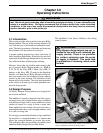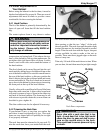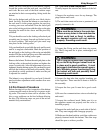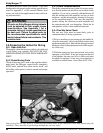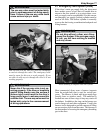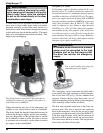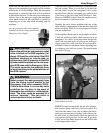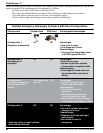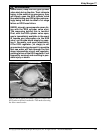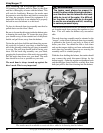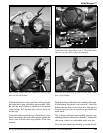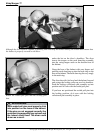
47
© Copyright 1970-2008 Kirby Morgan Dive Systems, Inc. All rights reserved. Document #080626002
Kirby Morgan 77
Most commercial divers wear a harness (separate
from the weight belt) that is used for several pur-
poses. The harness is fitted with large metal rings
(usually brass or stainless steel). The umbilical is
hooked into one of these rings to keep any strain off
the helmet. In addition, the rings on the harness are
used to hang tools and other equipment. Usually the
harness is also designed to provide a means of lifting
an unconscious diver from the water. This harness is
the best method of securing the emergency breathing
gas to the diver.
Diver donning a complete bail-out system.
3.7 Emergency Gas System (EGS)
If the diver’s main gas supply fails, the diver must
have another source of gas that will enable him to
return to the dive station or to a point where a nor-
mal gas supply can be reestablished. For this reason,
an emergency gas supply (bailout) cylinder must be
used on all dives. The bailout cylinder is normally
worn on the back using a combination backpack and
lifting harness.
Never dive if the one way valve is not op-
erating properly. If the hose or breathing
gas/air fitting breaks near the surface a
serious injury could result to the diver’s
lungs and/or eyes. In extreme cases this
could be fatal. The one way valve must be
tested daily prior to the commencement
of diving operations.
WARNING
Do not dive without a diver worn Emer-
gency Gas System. If the main gas supply
is lost, you will have nothing to breathe
and may drown.
WARNING
The one way valve must be tested daily,
prior to commencement of diving opera-
tions. Failure of the one way valve could
cause serious injury or death.
WARNING
You can also test the one way valve by attempting
to suck air through the valve. The emergency valve
must be open for this test to work properly. If you
are able to suck any air through the valve it is not
working properly.



